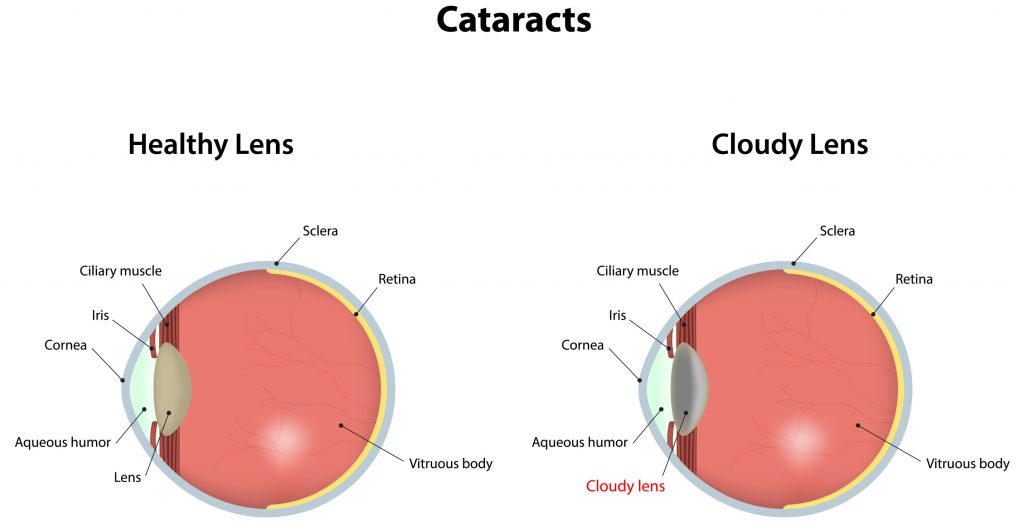
As we age, the natural lens in our eye can gradually cloud causing what is known as a cataract. Cataracts can also be caused by other issues such as diabetes, steroid use, high farsightedness and retinitis pigmentosa.
The lens, which reflects light and focuses it onto the retina, allows us to see at all distances. It is made up mainly of water and protein. The protein is spread throughout the lens to give clear vision, but the aging process sometimes causes the protein to clump in areas creating the clouding known as a cataract.

There are three places where the cataract can form in your eye:
- In the nucleus — called a nuclear cataract, forms in the center of the lens. This is generally caused by the natural aging process.
- At the cortex — named the cortical cataract, forms around the edges of the lens and extends into the center. This is seen frequently in diabetics.
- At the back — called a subcapsular cataract, forms at the back of the lens. It can form for a variety of reasons including in people with diabetes or high farsightedness.
When an eye has a cataract, the light that is taken in through the lens is scattered making it difficult for the lens to project onto the retina. This causes the blurry vision associated with cataracts.
Symptoms of cataracts include:
- Blurred vision
- Night vision glare/halos
- Brighter or glaring lights
- Muted colors
Read more about cataract symptoms.
Cataracts develop over time, so you may not notice the changes in your vision at first. You may even see a marked improvement in your near vision at first, but this is only temporary and will gradually worsen as your cataract develops.
If you notice any of these symptoms, you should speak with an eye doctor to get an eye exam and learn about the cataract treatment options.
Please visit the common questions page for more information regarding cataracts and cataract development.
Please contact us to find an experienced cataract surgeon in your area.
